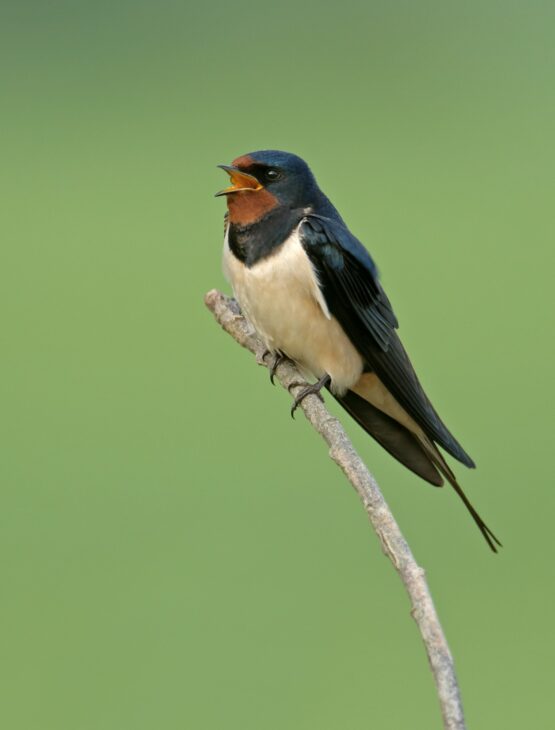One swallow does not a summer make…..
,

Swallow, (c) Chris Gomershall, 2020Vision
Every spring, I long for the sight of swallows returning to perch on telegraph wires and preen themselves after a mammoth journey which seems impossible for such a tiny, slight bird. Their chatter has been the constant soundtrack to my life over the years and their petrol blue and red plumage – and forked tails – have long been associated with the beginning of summer. Although, as the title of this blog suggests, don’t count on the weather behaving accordingly!
I saw my first swallow this week: just one solitary bird, preening itself on a wire. Seeing it made me happy, like there was hope of better days and warmer weather to come. There’s a sense of security about swallows – and their relatives, swifts, house and sand martins – arriving. We can’t control much in life, but we can always depend on these birds turning up from April to October.
Upon seeing this swallow, I also thought about the huge effort it had made to get to us here in the central belt of Scotland. The swallow’s journey is one which takes them from South Africa, across the Sahara Desert, over Morocco and Spain, before crossing the Pyrenees as they travel through western France, to finally land in the UK and Ireland. These little birds can cover 200 miles a day at a speed of around 17-22 miles per hour. Mind-blowing!
When they arrive here, they start snacking on our insect population and can often be seen skimming over the surface of ponds, lochs and rivers, enjoying the Scottish midge. It’s thought these skilled aerialists consume flies and aphids at a rate of 60 insects per hour. Sadly, they haven’t been left unscathed by climate change and their population has dropped, due to changes in farming and a decrease in our overall insect population.
Swallows commonly nest in old farm buildings, constructing a nest from mud and additions of straw. They will nest on the corner of buildings, under eaves, and on ledges, but are also a common sight in our cities now.
Life can be so busy, and, at times, it can also be difficult and sad. Taking time to notice small changes in the natural world has always helped me to stay grounded through the challenges life has thrown at me. So, next time you see a swallow, give it a try. Look up, take a moment to appreciate its beauty, think about the journey it’s had to get here, and carry on with your own journey – hopefully feeling a little lighter and more inspired for having had this nature encounter.
